By Asheesh Lanba, Assistant Professor of Mechanical Engineering
Despite trying times with the current pandemic, science must go on. On Saturday, Sept. 26th, the University of Southern Maine kicked off a series of workshops intended to engage Maine high school students in Cube Satellite development.
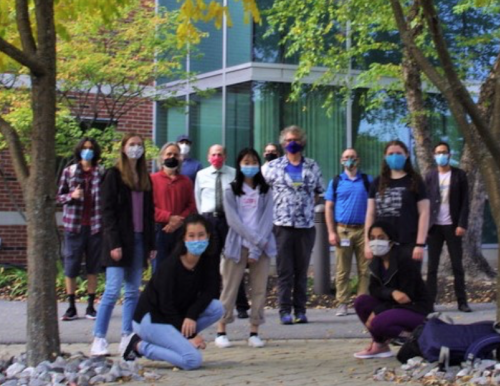
CubeSats are small research satellites that are made up of multiples of 10 cm x 10 cm x 10 cm, that have ushered in a new era of space research, allowing high-schools and universities to participate in this one very niche field. The workshop had prestigious speakers that included an award-winning educator, engineers work at NASA and the Jet Propulsion Laboratory (JPL), a commercial CubeSat kit company and USM faculty.
The first workshop drew praise from John Kraljic, who teaches engineering technology at Falmouth High School.
“This workshop far exceeded our expectations and is going to be extremely useful for our students going forward,” Kraljic said.
This workshop series has been made possible by a $2.8 million NASA grant titled “Maine NASA STEM Engagement FY 2020-2024″ awarded to the Maine Space Grant Consortium. This funding supports efforts to create a premiere USM facility and programs for developing CubeSats for Maine. We are also looking to reach out and partner with any interested K-12 schools, especially high schools.
The first workshop saw attendees from Falmouth High School and Fryeburg Academy, and they gathered at 8 a.m. at the Portland Campus’s Maker Innovation Studio (MIST), which is part of Michael E. Dubyak Center for Digital Science and Innovation. The modern equipment at the Dubyak Center, overseen by So Young Han, makes MIST an ideal location for these workshops. So Young has also implemented rigorous social distancing policies in place, and has equipped the space with plexiglass windows for student separation along with stringent wipe-down policies.
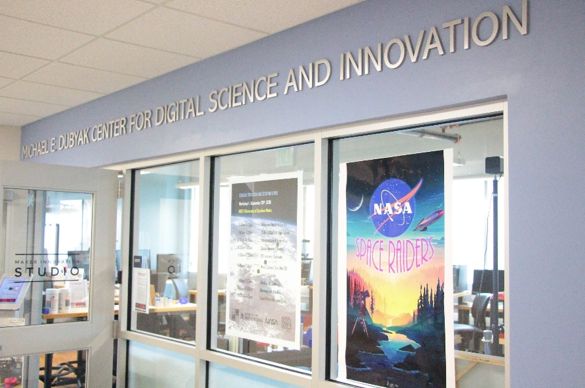
The workshop was kicked off by a zoom talk by Bishop O’Connell High School in Virginia. The talk was led by Melissa Pore, an award-winning educator who has mentored the launching of STMSat-1, the first CubeSat completely built by elementary school students. A few students who worked on the project also spoke about their work and experience, providing the
Maine students with some crucial insights into CubeSat research and development.
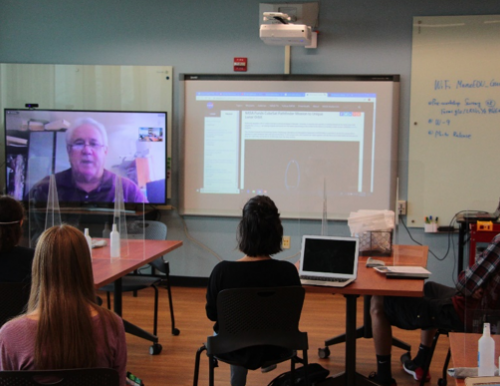
The students were then given a talk about Space Mission Planning by Garrett Skrobot, a NASA engineer and mission manager who has 50+ launches under his belt. He gave the students a brief history space research in the US, and told them about his journey to becoming an engineer at NASA, so that students can learn from his experience to get to similar positions in their STEM careers.
He started off the talk by informing the attendees that the CubeSat box design actually came from the packaging of a Beanie Baby, a popular toy amongst children. He then briefed the students on the various aspects of mission planning, so that they can do the same with their own mission initiatives.
Space Technologist Warren Ziegler invited Andrew Klesh, a celebrity amongst space enthusiasts and a NASA Jet Propulsion Laboratory (JPL) scientist, to talk about the MarCo CubeSat, for which he was the Chief Engineer. The MarCo satellites are the first CubeSats on Mars, and the two satellites have been nicknamed WALL-E and EVE after characters in a Pixar film. The satellites were able to take stunning images of areas of Mars that have never been imaged before, and also perform some simple experiments in radio science. The attendees were transfixed by Andrew’s presentation as he is a gifted speaker full of very useful information for the high-school students.
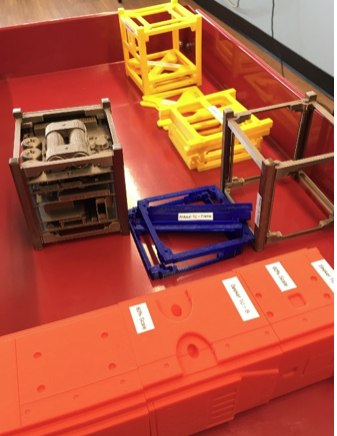
The students also got to play with CubeSat kits from Xinabox. Company representatives Judi Sandrock and Bjarke Gotfredsen led talks and student exercises on their XK01 kits, which were handed out to all the students group. These kits give the students easy-to-use chip sets that can be used to create a weather station device that can collect a wide range of environmental data. The chipsets with additional components in the upcoming workshops will give the students the equipment they need to assemble a functioning CubeSat that can be launched into orbits.
Warren Ziegler, who helped organize the event and is the mentor for the students from Fryeburg Academy’s Space Raiders club, started brainstorming ideas to use the kits in potential balloon launches or drones to conduct environmental experiments in Maine.
USM’s faculty also gave the students the only in-person talks and assignments (what is a lesson without homework?). I gave the students a talk on Engineering Design, and the students are expected to come up with a critical design report of their mission ideas by the next workshop.
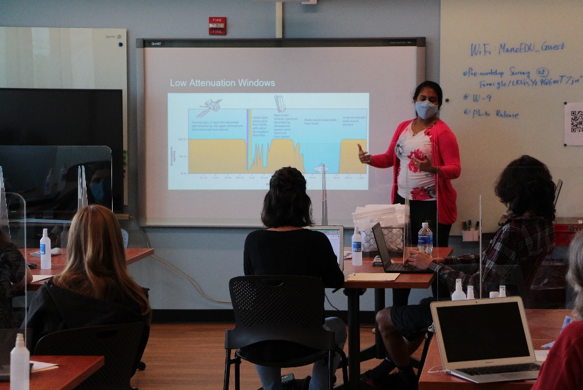
Ashanthi Maxworth, assistant professor of Electrical Engineering, gave a fascinating talk about space environments for CubeSats, and the students had her answer a bunch of questions pertinent to their projects. Scott Eaton, Assistant Professor of Mechanical Engineering who also is the lead organizer for the event, gave a talk on project management, and had the students assign roles on their respective engineering teams. Finally, Daniel Martinez, who has worked at NASA, ended the workshop with a presentation on mission planning. Daniel is setting up a CubeSat assembly and testing space (CATsat) at USM.
The high school teams are working on their own CubeSat projects, and are also working towards doing a balloon launch in collaboration with USM. Next year, the USM team plans to have a bigger and longer time period for the workshops, with more high-school teams participating.
“The talks and information given to the students puts them much further along the path that they are own for their CubeSat missions” said Andrew Njaa, a physics and science teacher at Falmouth High School. “The students also told us that they had a lot of fun and learned new useful things for their CubeSat projects.”
Upcoming workshops will have more speakers from the space research industry, and the faculty at USM will provide the students with presentations on a variety of topics that include Computer-Aided Design (CAD), systems engineering, orbital mechanics, etc.

